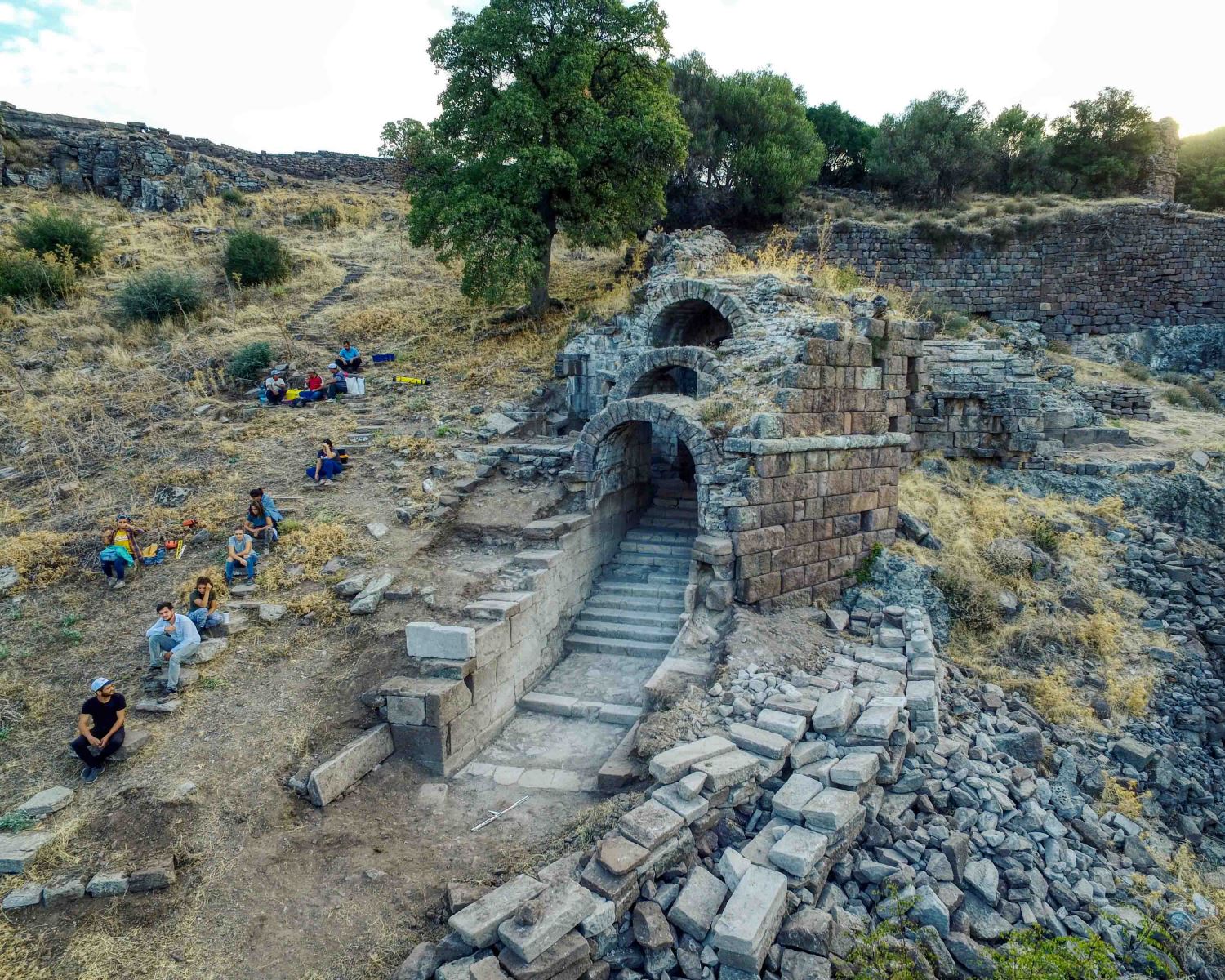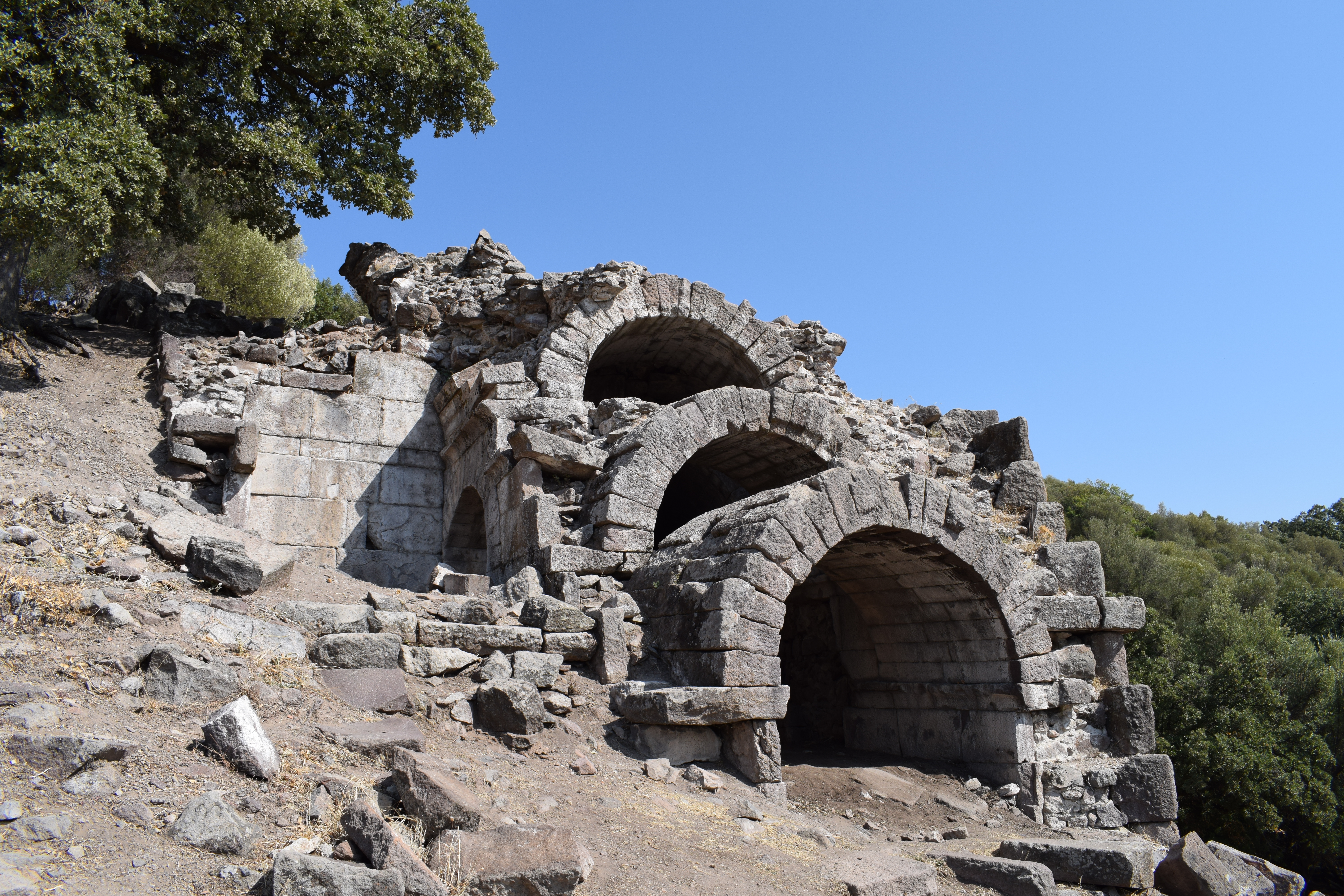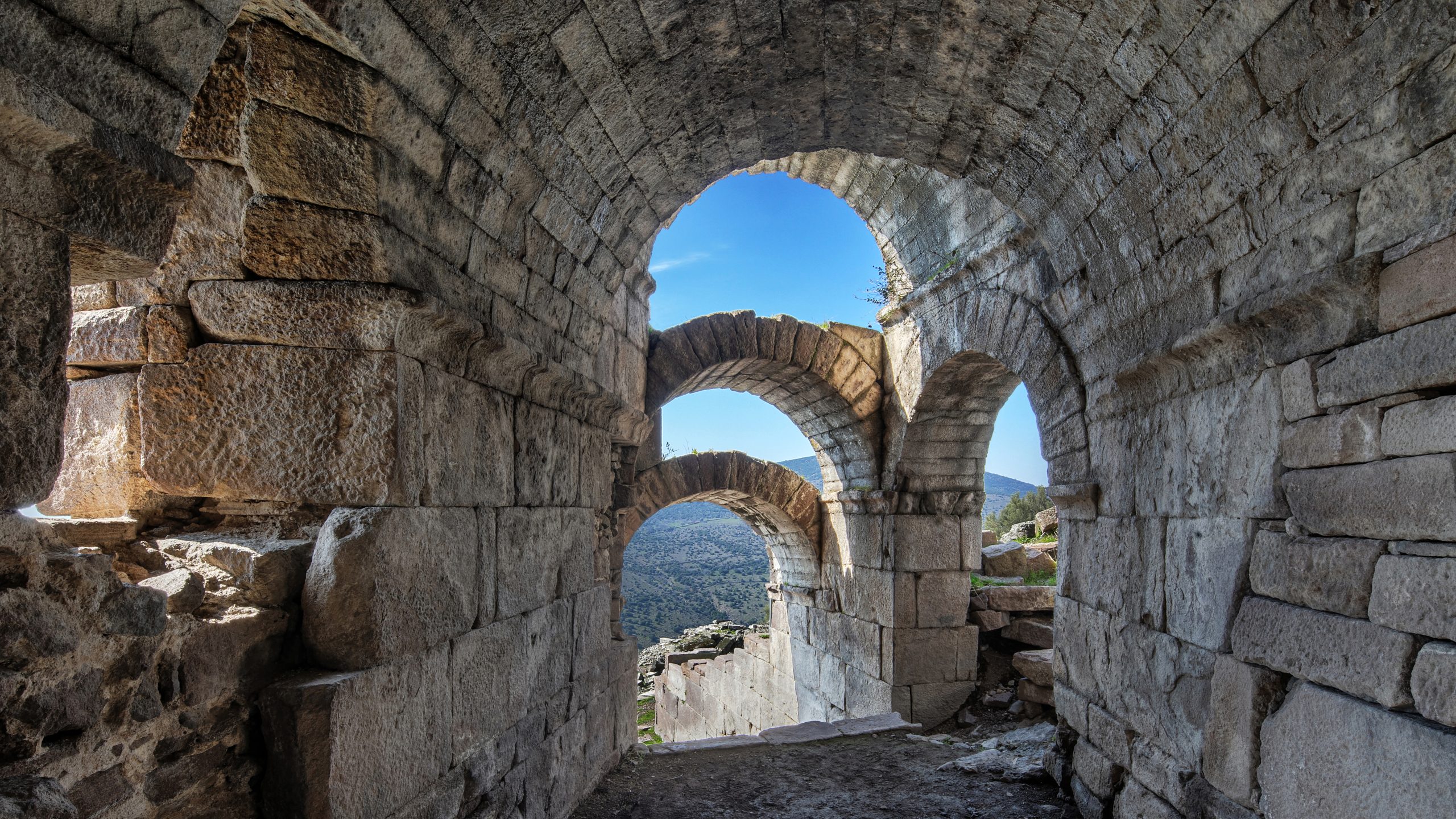Are you tired of crowded tourist routes, shops selling the same souvenirs on every corner, and waiting in line to take a photo in front of a monument? If your answer is yes, then it's the perfect time for me to whisper one of the Aegean's most special secrets to you. I'm going to tell you about a place that has remained in the shadow of popular ancient cities but possesses a history just as impressive and an atmosphere just as enchanting. Are you tired of the crowds and looking for a real sense of discovery? Then our list of things to do in the Ancient City of Aigai, the hidden treasure of Manisa, is just for you. This is a place where time seems to stand still, where the whispers of history are interrupted by nothing but the sound of the wind.
Explore the ruins of this impressive Aeolian city on the summit of the Yunt Mountains
The first thing that greets you when you step into Aigai is the majestic and peaceful view of the Yunt Mountains (known in antiquity as Aspordenos). This place is very different from the coastal Aegean ancient cities you might know. Although it is one of the 12 Aeolian cities mentioned by Herodotus, the father of history, Aigai was founded in a mountainous region, far from the sea. But why? The answer is hidden in the city's name. Aigai is derived from the ancient Greek word αίγα, which means goat.

This mountainous geography was perfect for goat breeding. The people of Aigai turned this geographical disadvantage into their greatest strength. The city's economy was entirely based on animal husbandry, especially goat breeding. As a result, they became a center for the production of leather, woven goods, and bone products. So much so that they even played a part in one of the greatest cultural revolutions of the ancient world. When Egypt halted its papyrus exports, an urgent need for writing material arose for the famous library of their ally, the Kingdom of Pergamon. At this point, the goats of Aigai came into play! It is believed that a large portion of the goat skins, the raw material for parchment—which was invented by and named after Pergamon—was supplied by Aigai, the experts in this field. So, Aigai was not just a mountain town, but a strategic industrial center that fueled the information revolution of the ancient world.
See the ruins of the three-story agora (marketplace) and the council building (bouleuterion)
The best place to witness the wealth and power of Aigai is undoubtedly the monumental structures in the city center. As you wander here, you will be amazed at how such magnificent buildings were constructed in this mountainous terrain. The heart of the city, the Agora, or marketplace, was not just a market but also a center for social life in ancient cities; it was a square where people gathered, chatted, and discussed politics and trade. The most surprising feature of the Aigai Agora is that it was three stories high!.

Imagine 14 shops lined up on the ground floor. Perhaps one sold sandals made from Aigai's famous leather, and another sold woolen cloaks. The top floor was a magnificent portico (stoa), adorned with Doric and Ionic columns, overlooking the city square. You can picture the city's prominent figures strolling here, discussing important decisions against the backdrop of the Aegean landscape.
Right next to the Agora is the Bouleuterion, or Council Building, where the city was governed. With a capacity of about 190 people, this was where the pulse of Aigai's democracy beat. During excavations, marble statues of six members of a noble family who supported the building's construction and a statue of Hestia, the city's patron goddess, were found. One of the statues even bears the signature of the famous Pergamene sculptor Menestratos. This is concrete proof of how wealthy and culturally advanced Aigai was.
Take a trip away from the crowds, intertwined with history and nature
Perhaps the most beautiful aspect of visiting Aigai is the unique tranquility it offers. There is no noise from tour buses or crowds of selfie sticks here. Just you, thousands of years of stones, and the wind of the Yunt Mountains. The city's ruins are so beautifully integrated with nature that you feel like you're on a movie set. Wildflowers taking root between the steps of the theater, a tortoise wandering on an ancient street... These moments make your trip to Aigai unforgettable.

Sit on the steps of the city's theater, which leans against the hillside, and gaze at the valley before you. Run in the stadium to commemorate the ancient athletes or walk along the city walls built following the rugged terrain. This untouched state of Aigai is its greatest charm. Unlike perfectly restored sites, here you feel the flow of time, the power of nature, and the true texture of history. This is not just a tour of an ancient city; it's like a meditation where you can rest your soul amidst the natural beauties of the Aegean.
While you're here...
If you wish to continue your journey after being captivated by Aigai's magic, Manisa offers fantastic alternatives.
For History Buffs: Be sure to head to the Ancient City of Sardis, the legendary capital of the Lydian Kingdom. In this magnificent city, known as the first place where coins were minted, you can see the colossal Temple of Artemis, one of the largest synagogues of the ancient world, and a Gymnasium complex from the Roman period.
For Nature and Adventure Lovers:Spil Mountain National Park, considered the lungs of Manisa, awaits you. In this park, home to the endemic Manisa Tulip and where the famous wild horses roam freely, you can take wonderful hikes, relax in picnic areas, or visit the mythological Weeping Rock (Niobe).
Frequently Asked Questions (FAQ)
Is there an entrance fee for Aigai Ancient City and what are the visiting hours? No, entrance to the Ancient City of Aigai is completely free. You can freely visit the city any day of the week between 08:00 and 17:00.
How to get to Aigai Ancient City? Aigai is located near the Yuntdağı Köseler village in the Yunusemre district of Manisa. It is approximately 49 km from the Manisa city center. You can easily reach it by private car by following the signs on the Manisa-Menemen road. Village minibuses departing from the center are also an option.
How much time should I set aside to visit Aigai? We recommend setting aside at least 2-3 hours to comfortably explore the main structures (Agora, Bouleuterion, Theater) and enjoy the magnificent atmosphere. If you want to explore the entire area and do some hiking, you can extend this to half a day.
Bibliography: Some of the archaeological and historical information in this article was sourced from the official website of the Aigai Excavations. For more detailed information, you can visit: https://aigai.info/


 English
English Türkçe
Türkçe